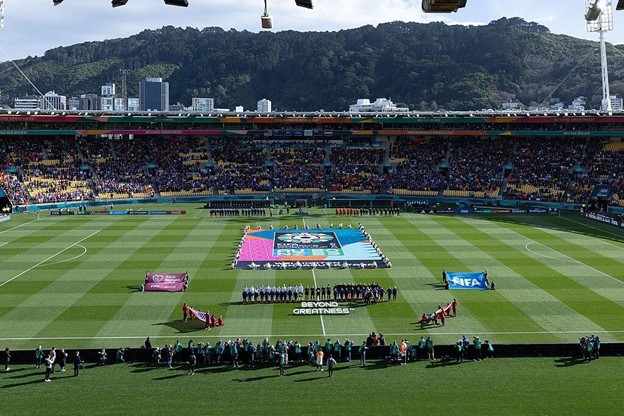Indigenous identity takes center field in the FIFA Women’s World Cup

The United States played the Netherlands in Wellington/Te Whanganui-a-Tara
Anna Johnson - With the knockout stages beginning, the FIFA Women’s World Cup is heating up. Sweden eliminated the tournament-favorite USA team in penalty kicks. Japan is on a historic run, scoring eleven unanswered goals in the group stage. Zambia earned their first-ever tournament win against Costa Rica. But quietly, one of the biggest stories of the tournament has nothing to do with the game itself - it’s about the places they’re being played. For the first time, Indigenous placenames are being used alongside the English names most viewers are familiar with.
The first match kicked off in Auckland-Tāmaki Makaurau between co-hosts New Zealand and Norway. Signs outside each stadium have both names printed on them, part of a larger campaign to revive the use of First Nations and Indigenous languages in Australia and New Zealand. The Aboriginal, Torres Strait Islander and Māori flags are also flying over stadiums for the first time. The highly-public displays highlight efforts to bolster Indigenous national identity in New Zealand and Australia. National identity builds on a person’s sense of attachment to the place they live by connecting it to a specific nation. The efforts to feature Indigenous identity at the world cup come from the tournament’s cultural advisory panel, a group of three First Nations Australian women and three Māori women from Aotearoa New Zealand. The panel was created to advise World Cup organizers on how to best represent and respect the unique cultures of Indigenous groups in the host states. Supporting a state’s team in an international competition already builds a sense of national identity. Pairing that unified support with an intentional emphasis on Indigenous culture links the two identities together to create a more resilient, diverse base of support for the state.
Over one billion people watched the 2019 Women’s World Cup and FIFA expects that number to nearly double for the 2023 World Cup. The scale of this campaign is unprecedented, highlighting Indigenous language for the entire world and encouraging the use of Indigenous placenames across the world. With Australia set to vote to have an Indigenous voice in parliament this year, this global campaign amplifies the voices of First Nations people who have been calling for sovereignty for decades. The visibility of this campaign shows a commitment to Indigenous culture and sets a precedent for future international events to show that same commitment. One thing to watch is whether increased Indigenous identity fragments or solidifies the national identity of diverse states.
Photo Credit: U.S. Department of State, Public domain, via Wikimedia Commons

